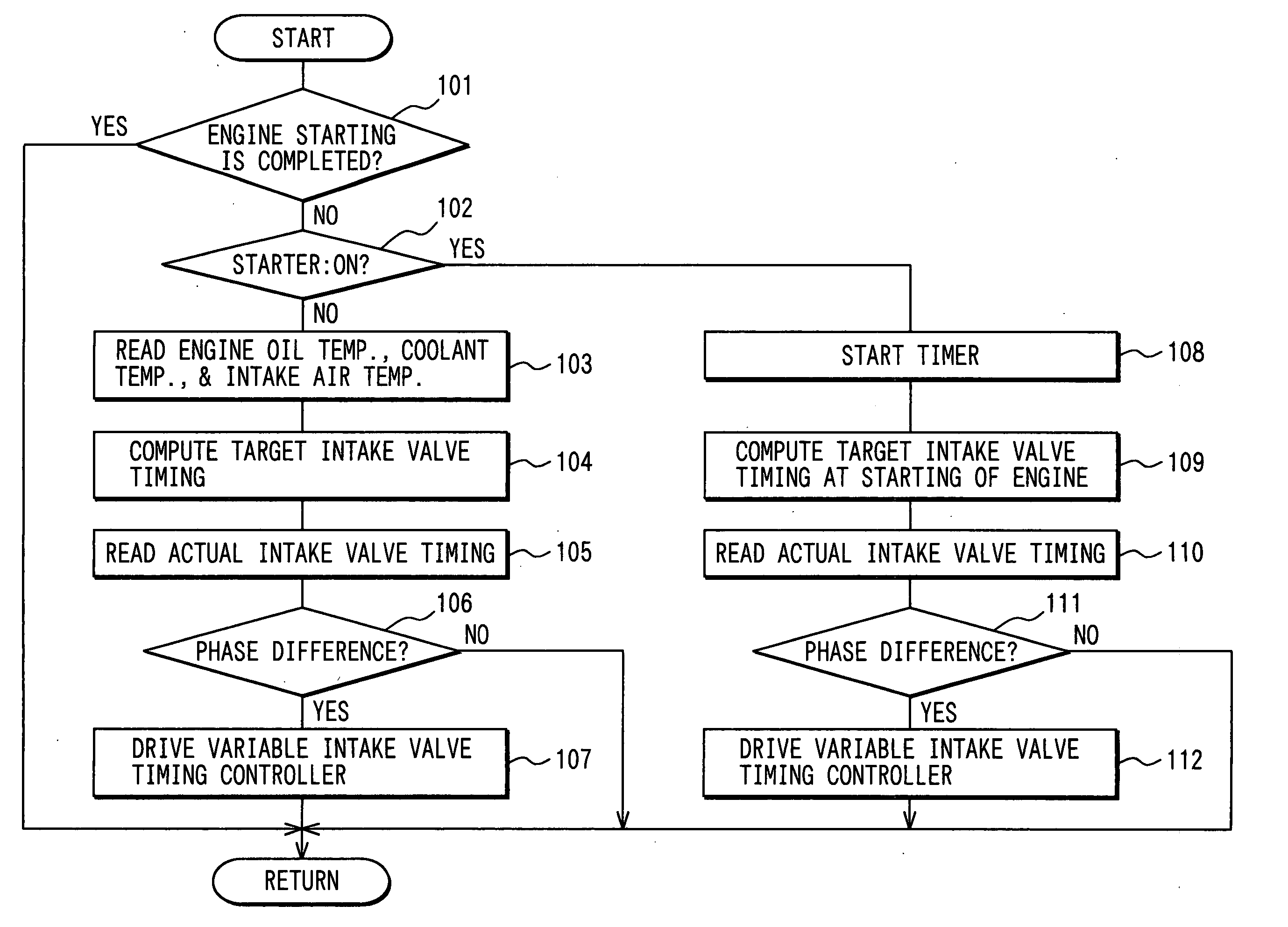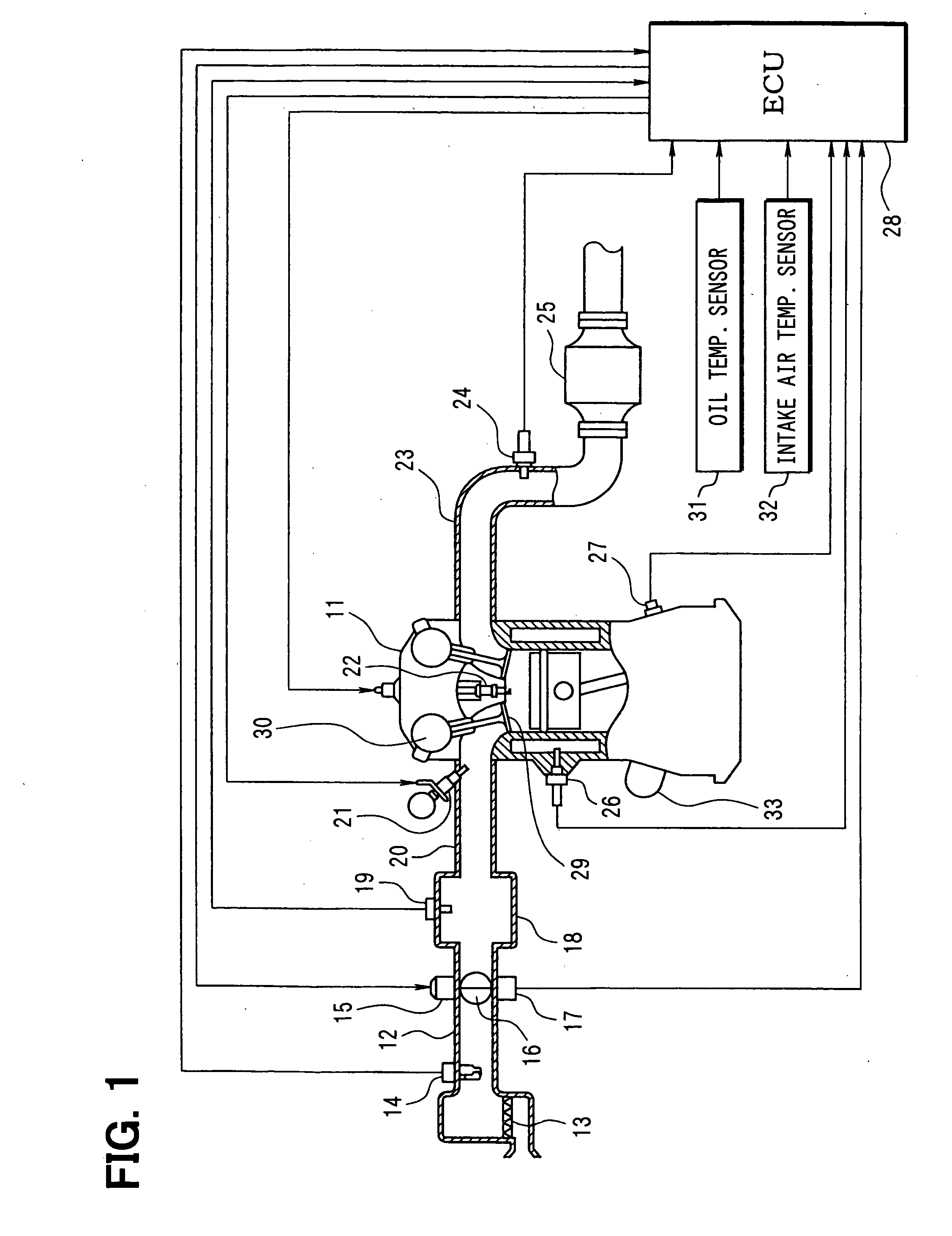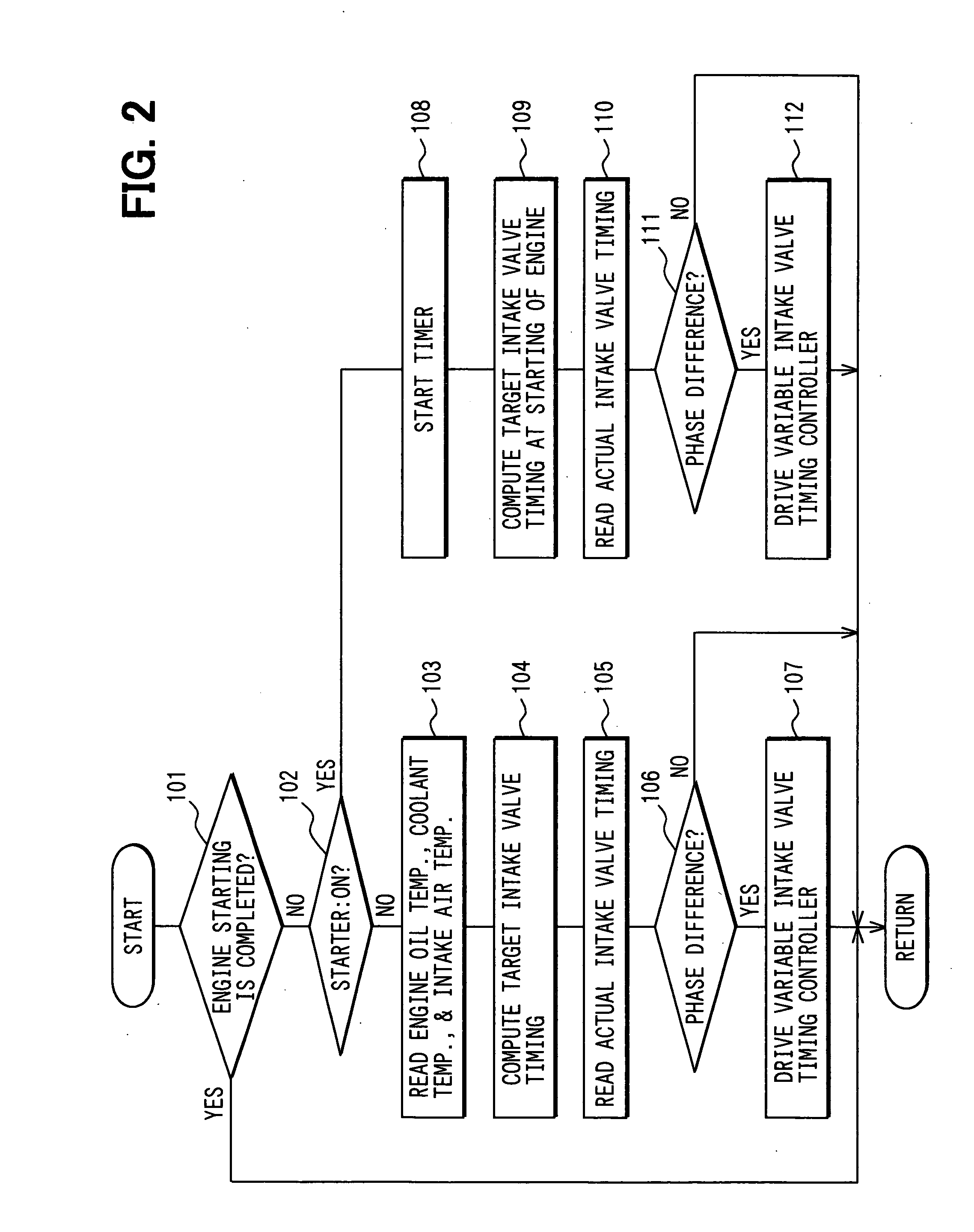Start controller for internal combustion engine
a technology for starting controllers and internal combustion engines, which is applied in the direction of engine starters, electric control, machines/engines, etc., can solve the problems of difficult to precisely control the engine speed of the engine, and the system is hardly applied to a vehicle, so as to enhance the startability
- Summary
- Abstract
- Description
- Claims
- Application Information
AI Technical Summary
Benefits of technology
Problems solved by technology
Method used
Image
Examples
first embodiment
[0024] Referring to FIGS. 1 to 4, a first embodiment is described. FIG. 1 is a schematic view of an engine control system. An air cleaner 13 is arranged upstream of an intake pipe 12 of an internal combustion engine 11. An airflow meter 14 detecting an intake air flow rate is provided downstream of the air cleaner 13. A throttle valve 16 driven by a DC-motor 15 and a throttle position sensor 17 detecting a throttle position are provided downstream of the air flow meter 14.
[0025] A surge tank 18 including an intake air pressure sensor 19 is provided down stream of the throttle valve 16. The intake air pressure sensor 19 detects intake air pressure. An intake manifold 20 is connected to the surge tank 18. A fuel injector 21 is mounted on the intake manifold 20 at a vicinity of an intake air port. A spark plug 22 is mounted on a cylinder head of the engine 11 corresponding to each cylinder to ignite air-fuel mixture in each cylinder. The spark plug generate spark to ignite a fuel-air ...
second embodiment
[0050] Referring to FIGS. 5 and 6, a second embodiment is described hereinafter.
[0051] Due to a specification of a driving motor in the variable valve timing controller or a control position of the variable intake valve timing controller 30 at the time when the engine is stopped, there is a possibility that the actual valve timing cannot become the target intake valve timing corresponding to the target intake air flow rate of the initial combustion cylinder at the time of starting engine.
[0052] In the second embodiment, the ECU 28 controls the variable intake valve timing controller 30 in such a manner that the actual intake valve timing is consistent with the target intake valve timing by executing a program shown in FIG. 5 at the time when the engine is stopped, in which the target intake valve timing for next engine starting is established. Furthermore, by executing a program shown in FIG. 6, while the engine 11 is off, the target intake valve timing for the next engine startin...
third embodiment
[0062] As shown in FIG. 9, the starter 33 starts cranking of the engine 11 in a situation that the variable intake valve timing controller 30 retards the actual intake valve timing so that the actual compression ratio is decreased to a level in which the vehicle vibration is reduced at cranking. At the time when the engine speed is increased by cranking so that the vehicle vibration is reduced to a predetermined level, the ignition is started. The actual intake valve timing is gradually advanced during cranking in such a manner as to gradually increase the actual compression ratio according to cranking duration (or engine speed). Thereby, the actual compression ratio is increased to a ratio in which the engine 11 is driven by the combustion pressure at the same time as the combustion start timing.
[0063] The processes of the start control program shown in FIGS. 7 and 8 are described hereinafter.
[0064] In step 1101, at least one of coolant temperature, engine oil temperature, intake...
PUM
 Login to View More
Login to View More Abstract
Description
Claims
Application Information
 Login to View More
Login to View More - R&D
- Intellectual Property
- Life Sciences
- Materials
- Tech Scout
- Unparalleled Data Quality
- Higher Quality Content
- 60% Fewer Hallucinations
Browse by: Latest US Patents, China's latest patents, Technical Efficacy Thesaurus, Application Domain, Technology Topic, Popular Technical Reports.
© 2025 PatSnap. All rights reserved.Legal|Privacy policy|Modern Slavery Act Transparency Statement|Sitemap|About US| Contact US: help@patsnap.com



